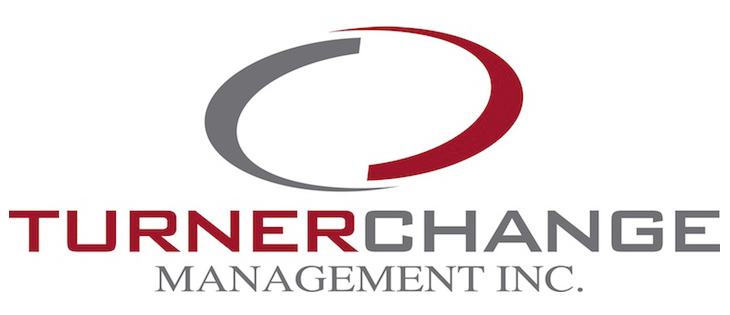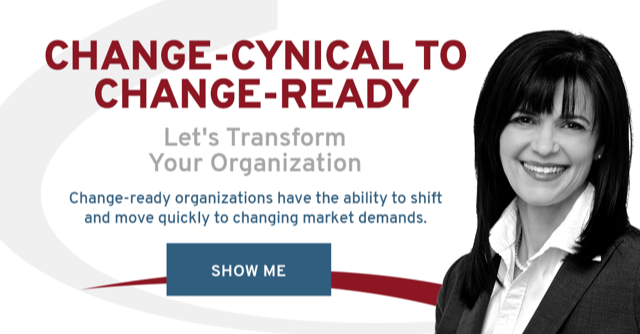You’re making change harder than it needs to be. In my 20 years of working in organizational change and working with CEOs I’ve discovered three common patterns among CEOs when leading small and large organizations through change that makes change harder.
- Misunderstanding the significance of more minor changes and only applying change management to significant change initiatives. The lack of understanding causes CEOs to underestimate how even minor disruptions can impact the people affected and make the larger complex changes more difficult.
Change is anything that pushes, encourages, forces, or otherwise disrupts our typical pattern and takes us outside our comfort zone. How you introduce and prepare people for minor changes and disruptions impacts what happens with the more complex and significant changes your organization needs to make.
- Failure to understand the difference between a normal human reaction to the change and rejection of the event. Leaders working with a resistant mindset mistake reaction for resistance and set in motion a toxic cycle of change that teaches their employees to fear change.
- Leaders focus too much on implementing individual changes initiatives instead of holistically integrating new activities and behaviours to grow and evolve their organization.
Do you recognize yourself or your organization in one of these patterns? That’s understandable. It’s how most leaders and people have viewed and talked about organizational change for decades.
To reduce the discomfort of change and make it easier for your employees and your organization to adopt new activities, you need to shift your mindset.
Let go of the idea that people resist change and adopt a Readiness Mindset™. Then you need to learn new knowledge and skills that enable you to help your employees build readiness throughout the organization.
Rethinking the typical approach to organizational change
 A few days ago, I watched a dad teach his daughter how to ride a bike. The child appeared a little nervous as the training wheels came off. Yet she was excited at the possibility. The parent was focused (there was no phone or other distractions in sight). And when she refused to get on the bike, he was patient. He gave her time. He let her walk around the bike, and helped her sit on the seat. When she was ready, he held on while she took her first few strides and then let her go to test out her new skill.
A few days ago, I watched a dad teach his daughter how to ride a bike. The child appeared a little nervous as the training wheels came off. Yet she was excited at the possibility. The parent was focused (there was no phone or other distractions in sight). And when she refused to get on the bike, he was patient. He gave her time. He let her walk around the bike, and helped her sit on the seat. When she was ready, he held on while she took her first few strides and then let her go to test out her new skill.
As I watched, I thought no child would ever ride a bike if we taught them how many leaders introduce and manage change in their organization.
If a parent taught their kid how to ride a bike the way most CEOs manage organizational change, the parent would decide the child needed to ride the bike. Then without understanding the child’s physical or mental readiness, set a date for the training wheels to come off. Once the training wheels were off the child would be expected to have mastered bike riding after one lesson (training session).
I don’t know any parent that would deliberately teach their child to ride a bike with that approach.
But I hear middle managers and employees describe organizational change situations that are similar. Employees are expected to let go of one or more current practices and adopt new knowledge, skills, and behaviours by a set date. They often feel that their leaders don’t give them the support, focus or guidance they need. When they push back and don’t adopt the new situation by the deadline, they are labelled resistant to change.
Frustrated and exhausted leaders and employees give up, stay silent about what’s needed and pay lip service to changes the organization needs to make.
Creating a Fearful and Cynical Workplace
One middle manager shared with me that when the leaders announce a change, the people in her department are afraid to ask too many questions or disagree. That’s because they fear being viewed as not a team player. They have become what Jeannie Daniel Duck, author of the Change Monster,” calls change survivors. Cynical people who’ve learned how to live through change programs without changing.
Another employee in our change management course described how everyone who disagrees with a change is viewed as resistant. When leaders introduced the implementation of a large IT project, everyone stayed silent about their concerns for fear of being labelled resistant.
When it came time for implementation, many of the processes meant to support the technology didn’t work.
Help Your Employees Embrace Change
It doesn’t have to be this way. You can enable change in your organization that creates a healthy and sustainable environment with employees who will embrace and move toward something new.
If you have a history of poorly led changes and your employees have learned to fear change, it will take time to develop the trust and confidence of your employees. Don’t expect it to happen with one well-led change initiative.



